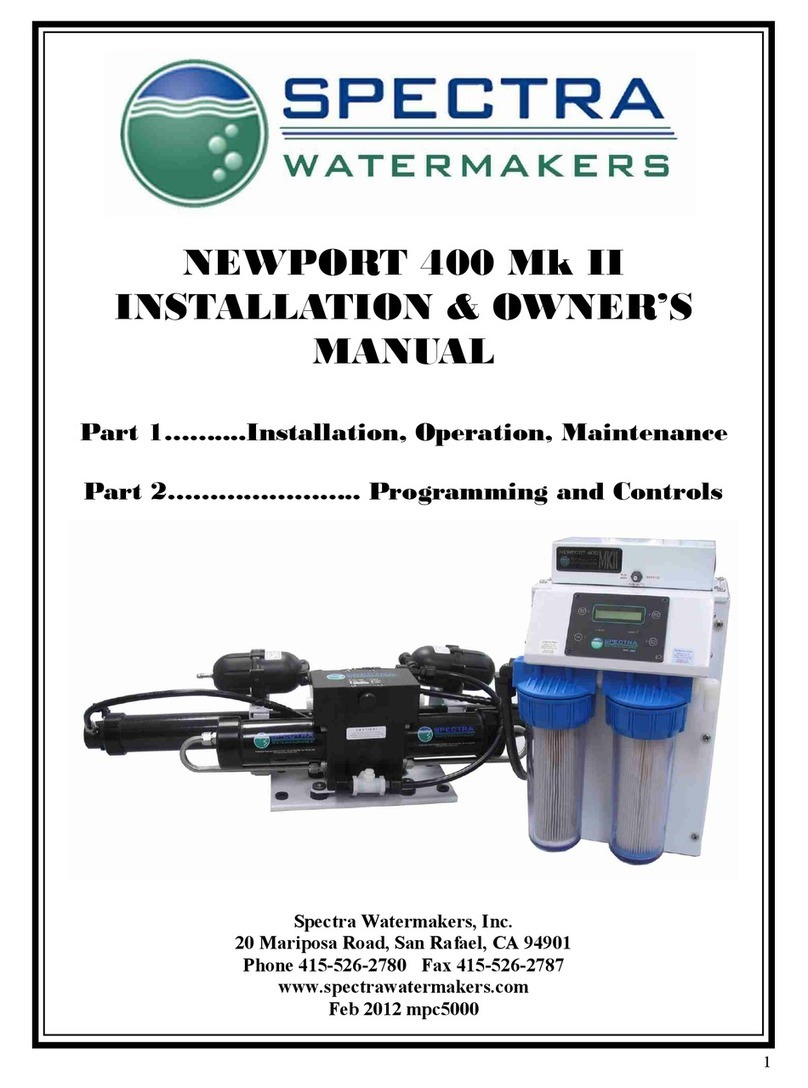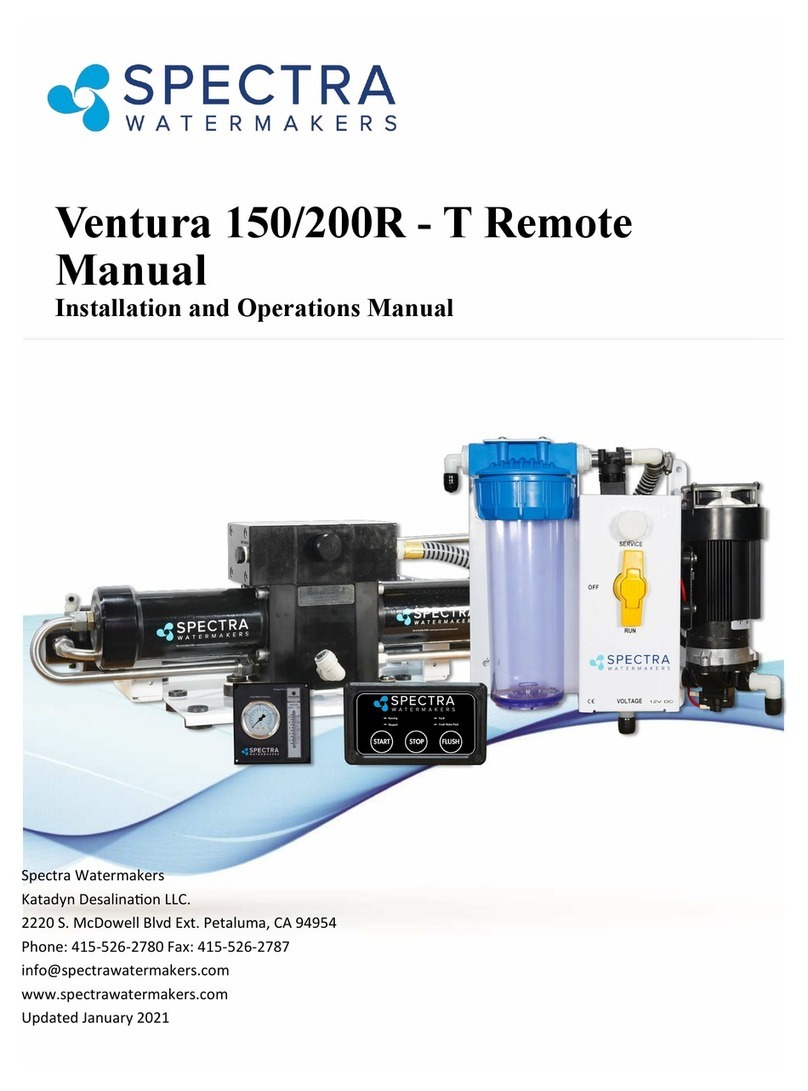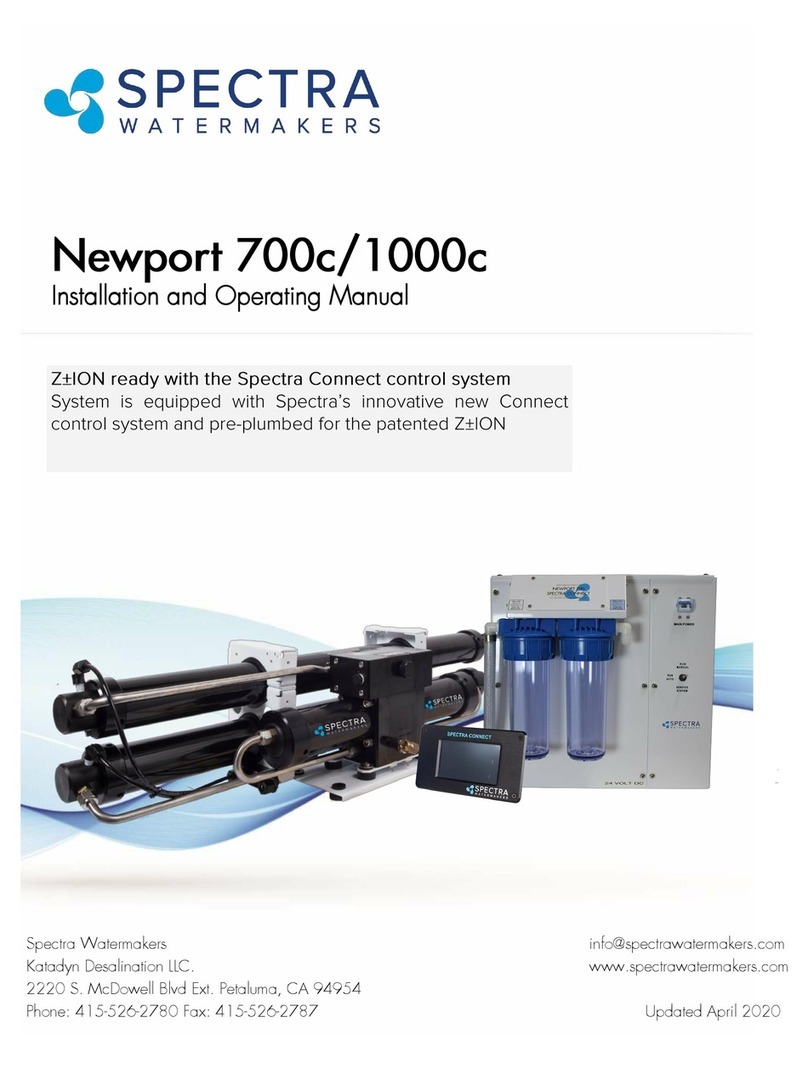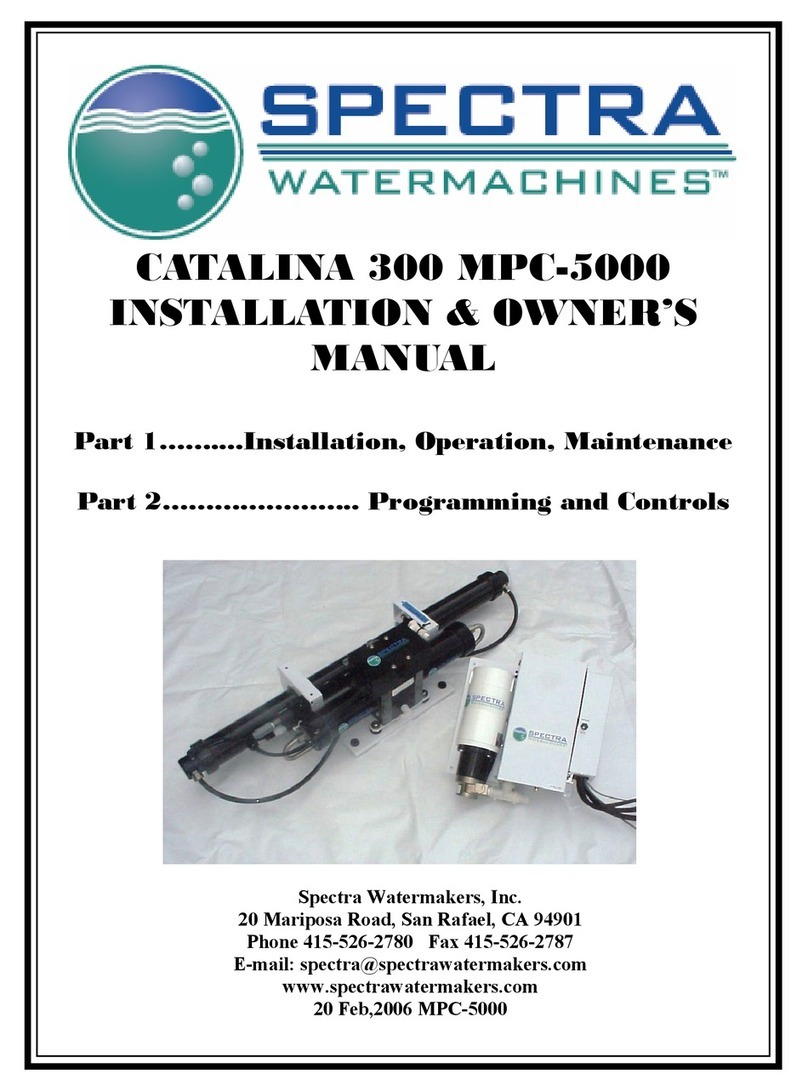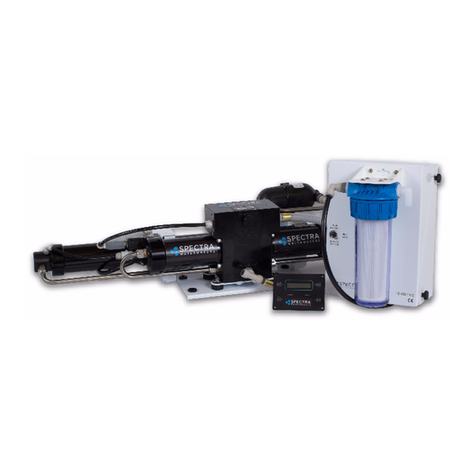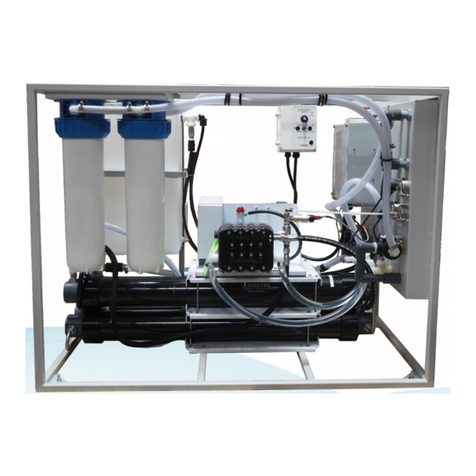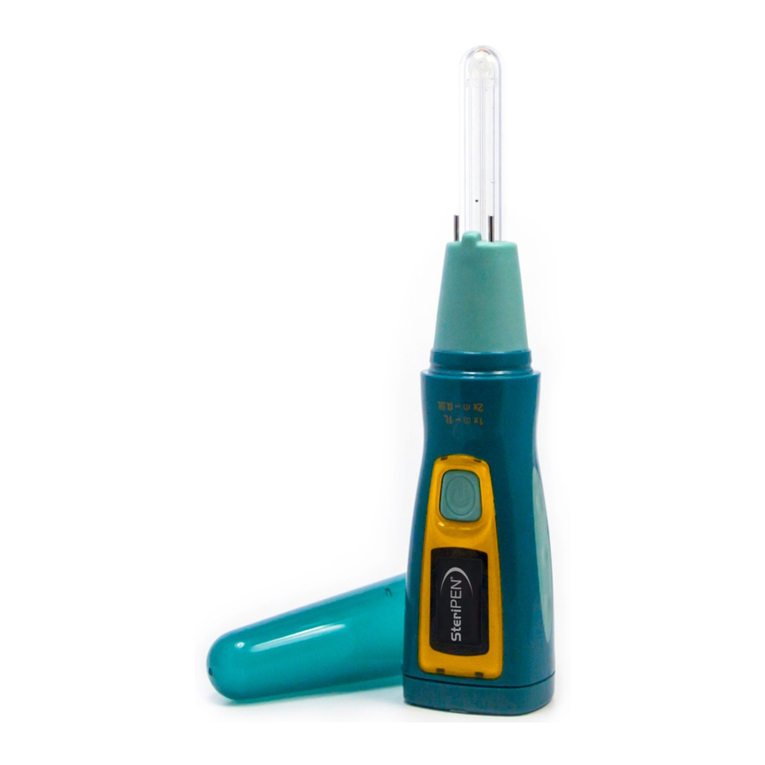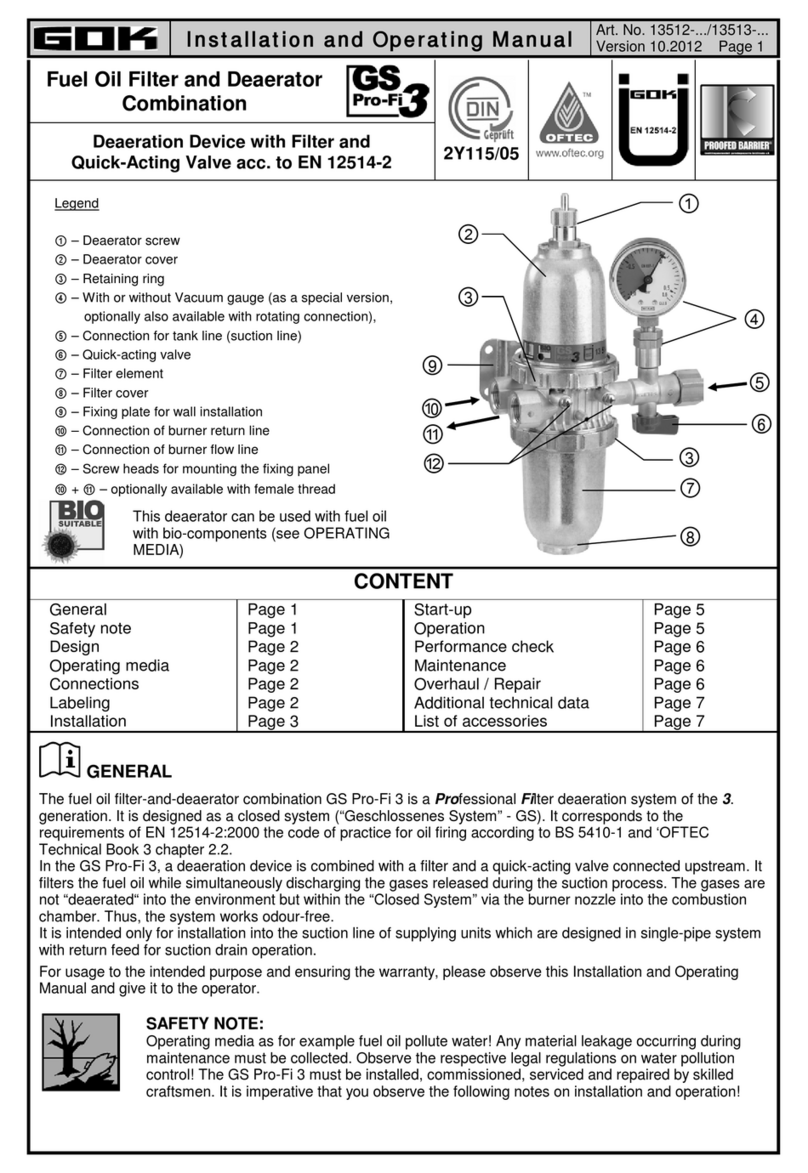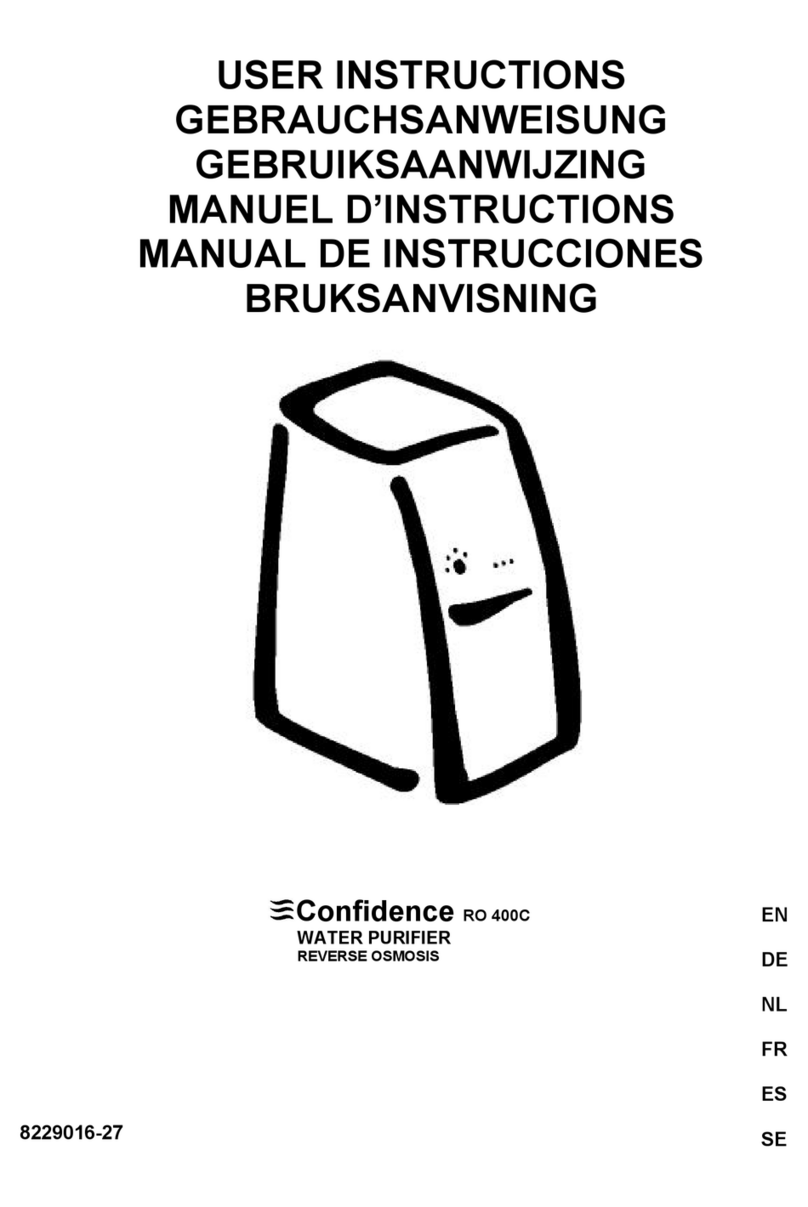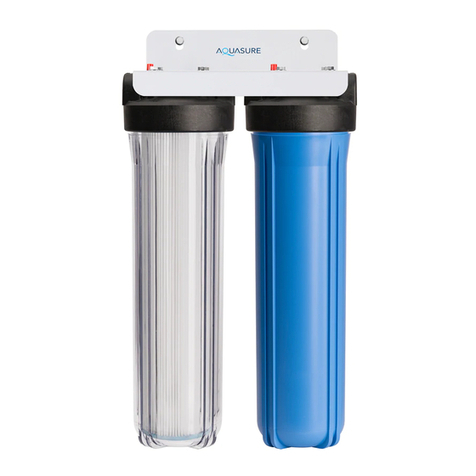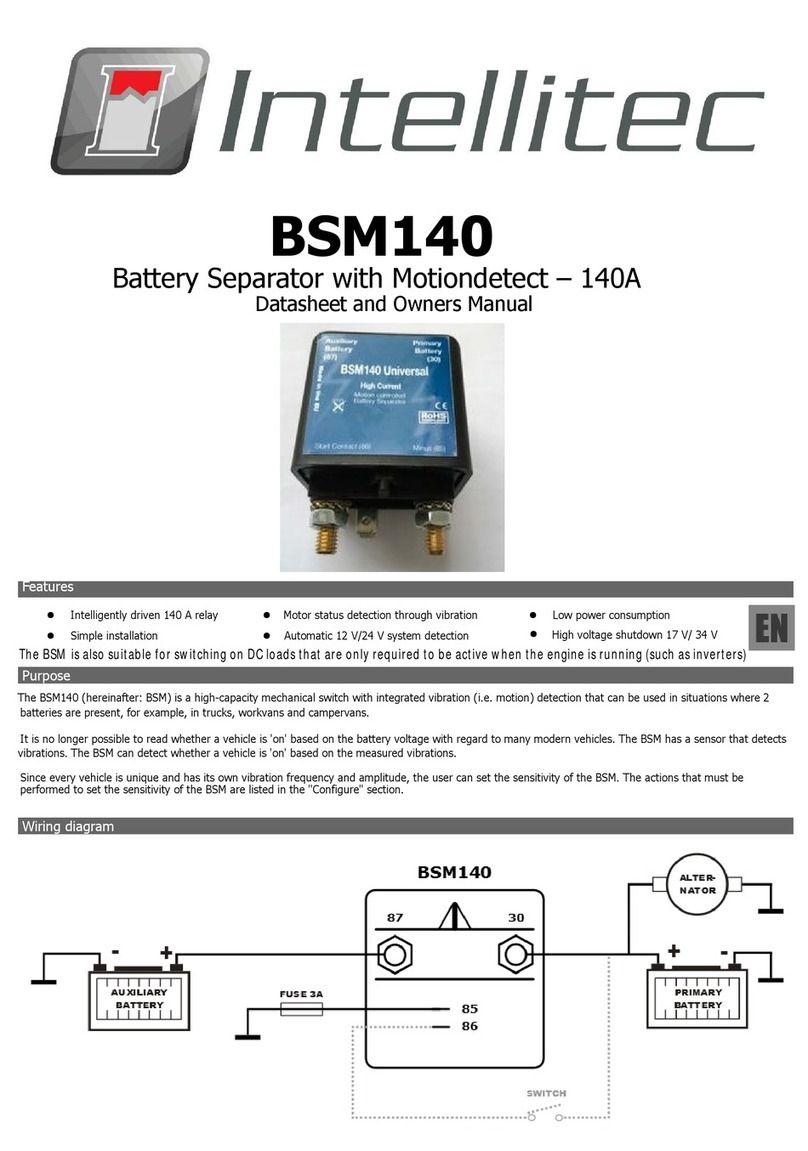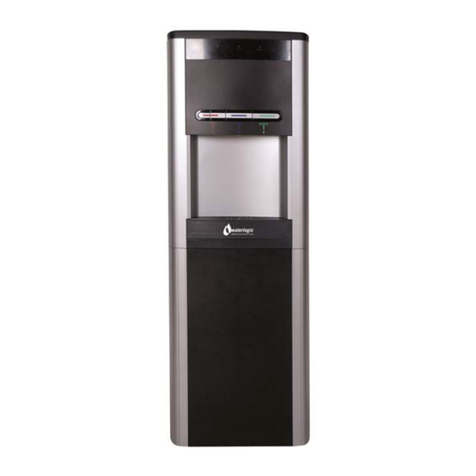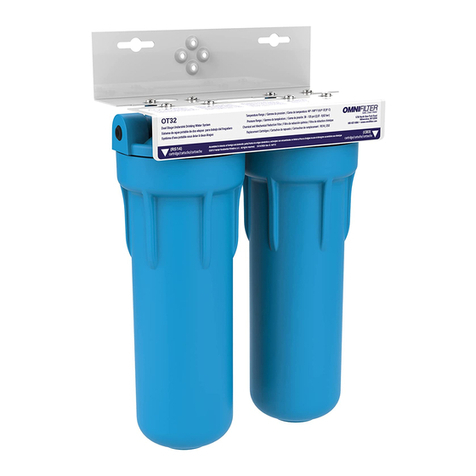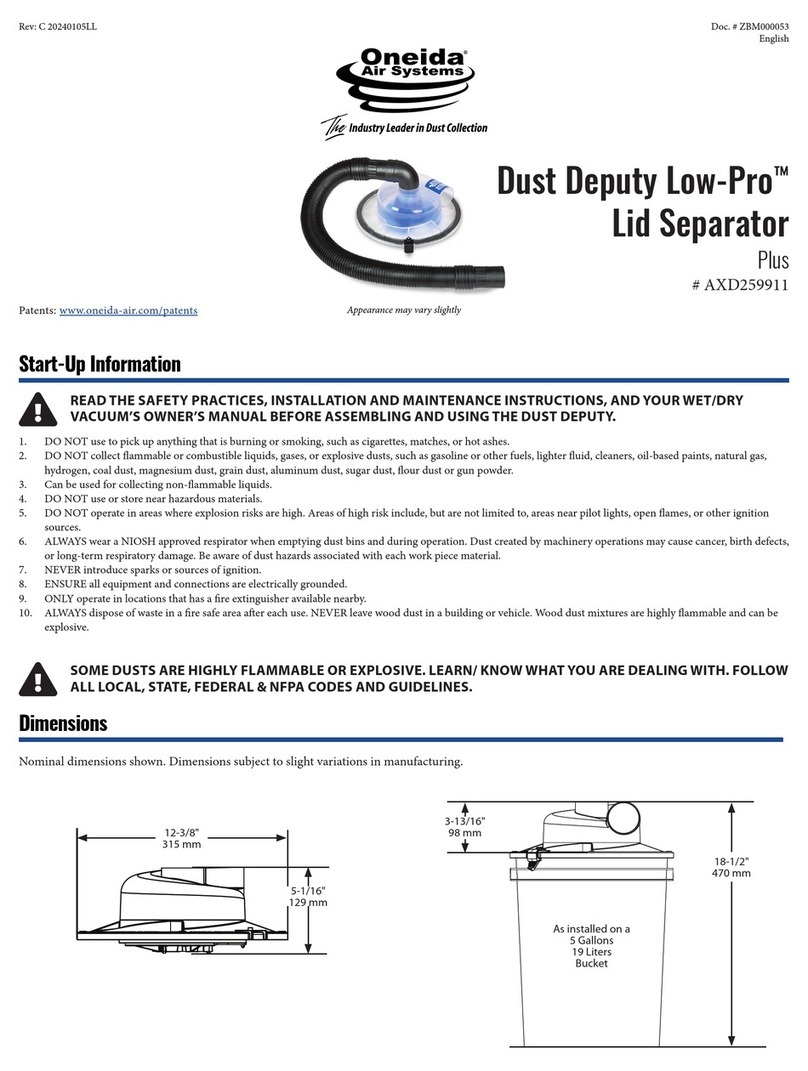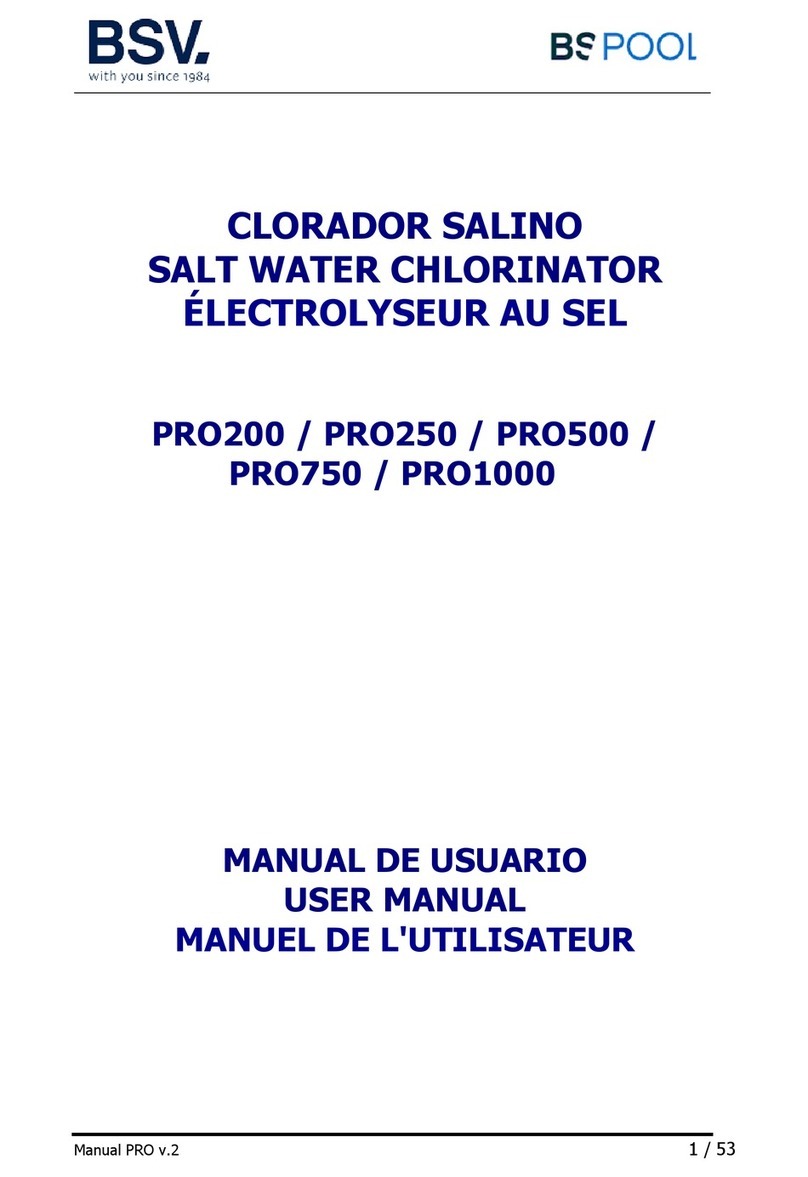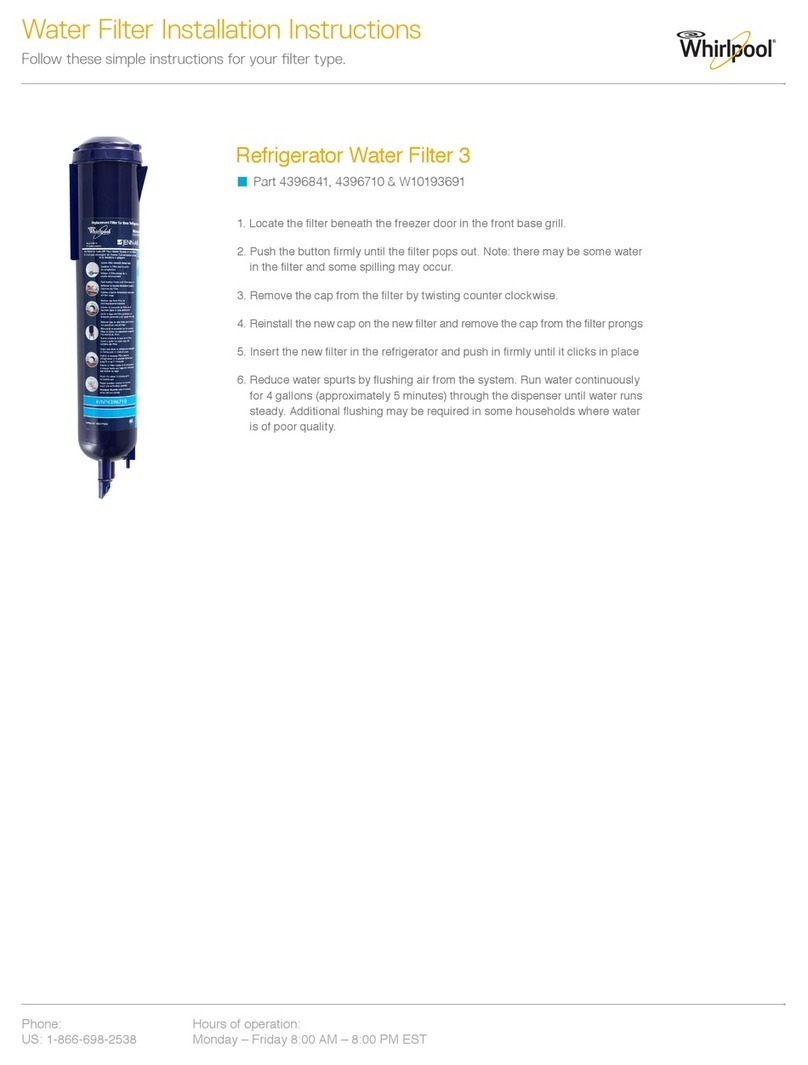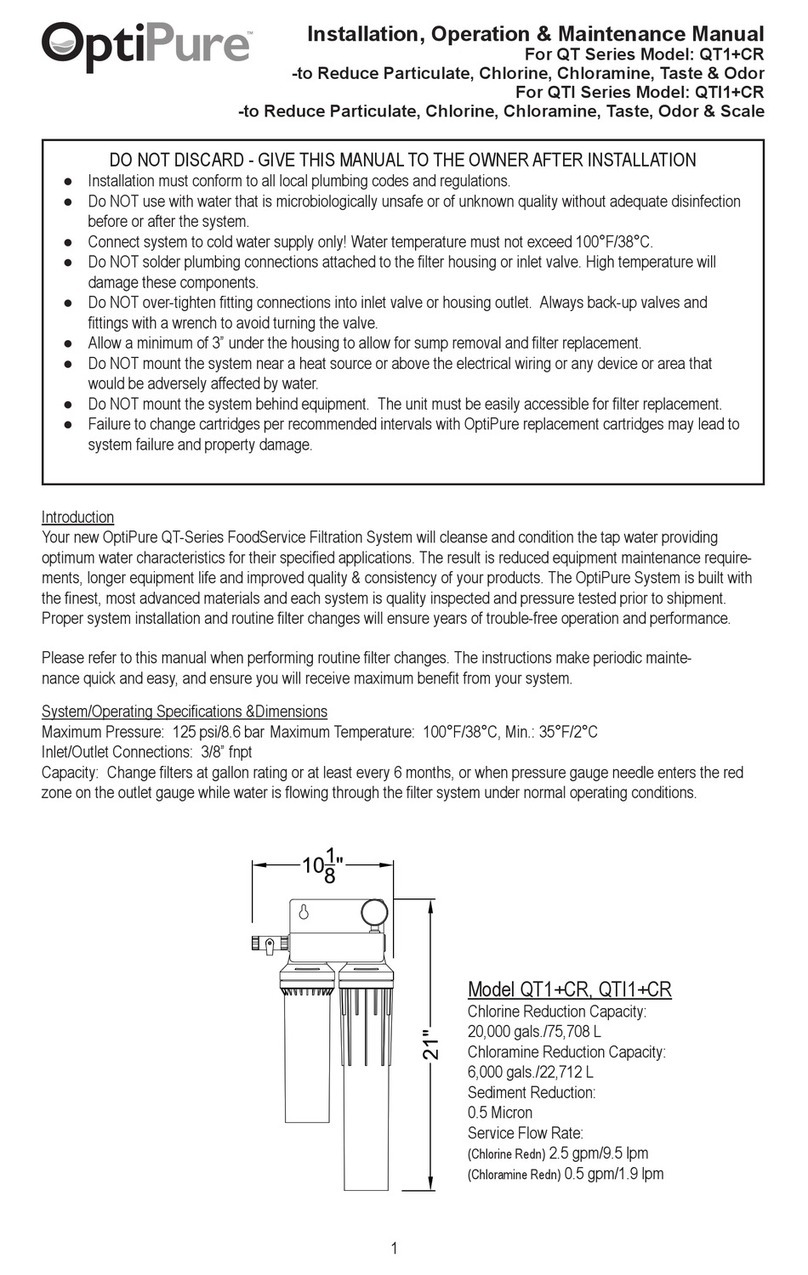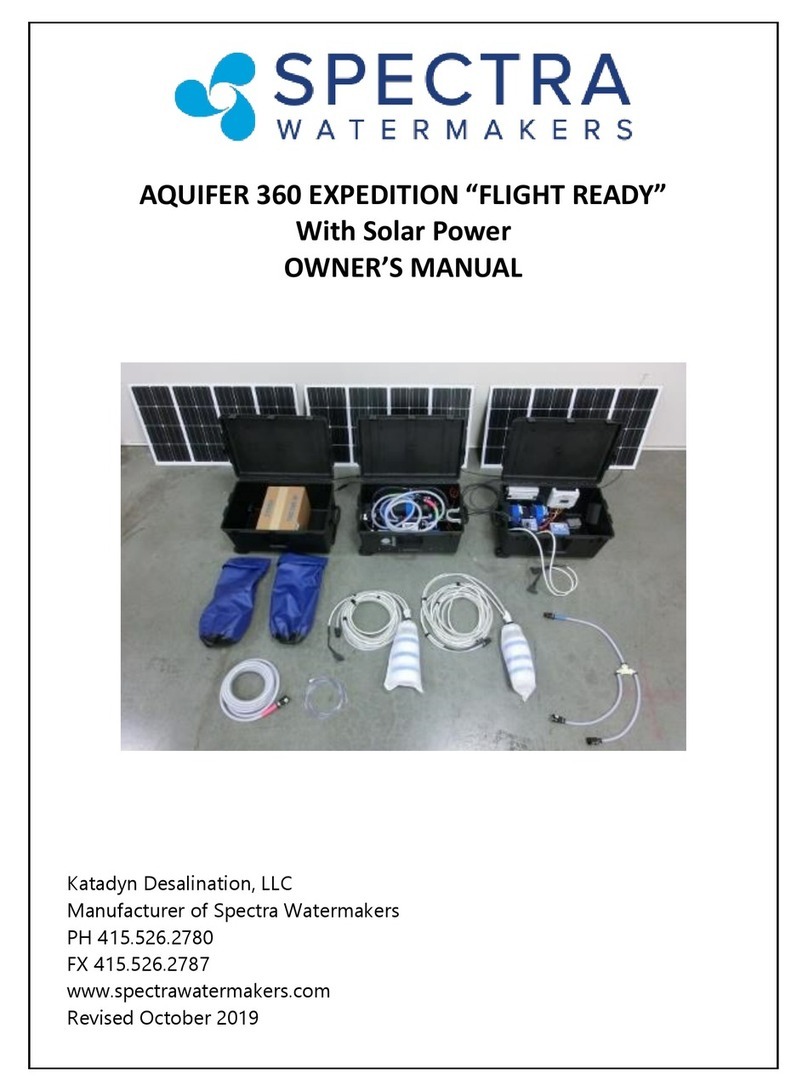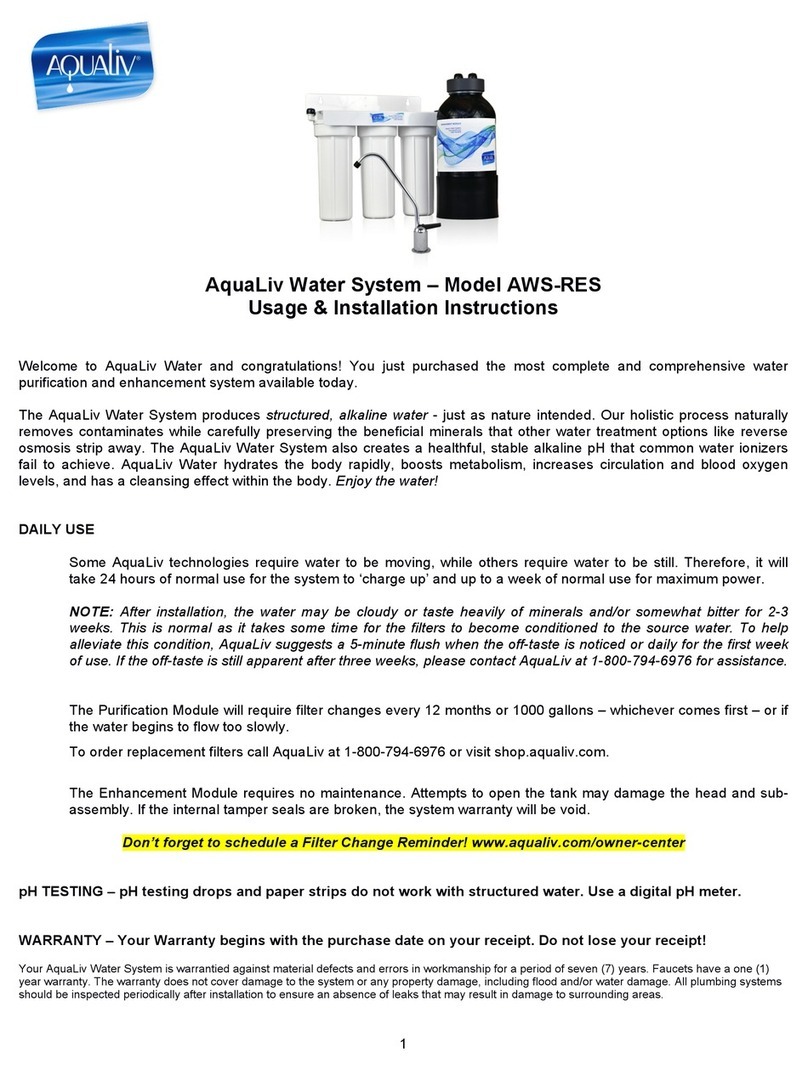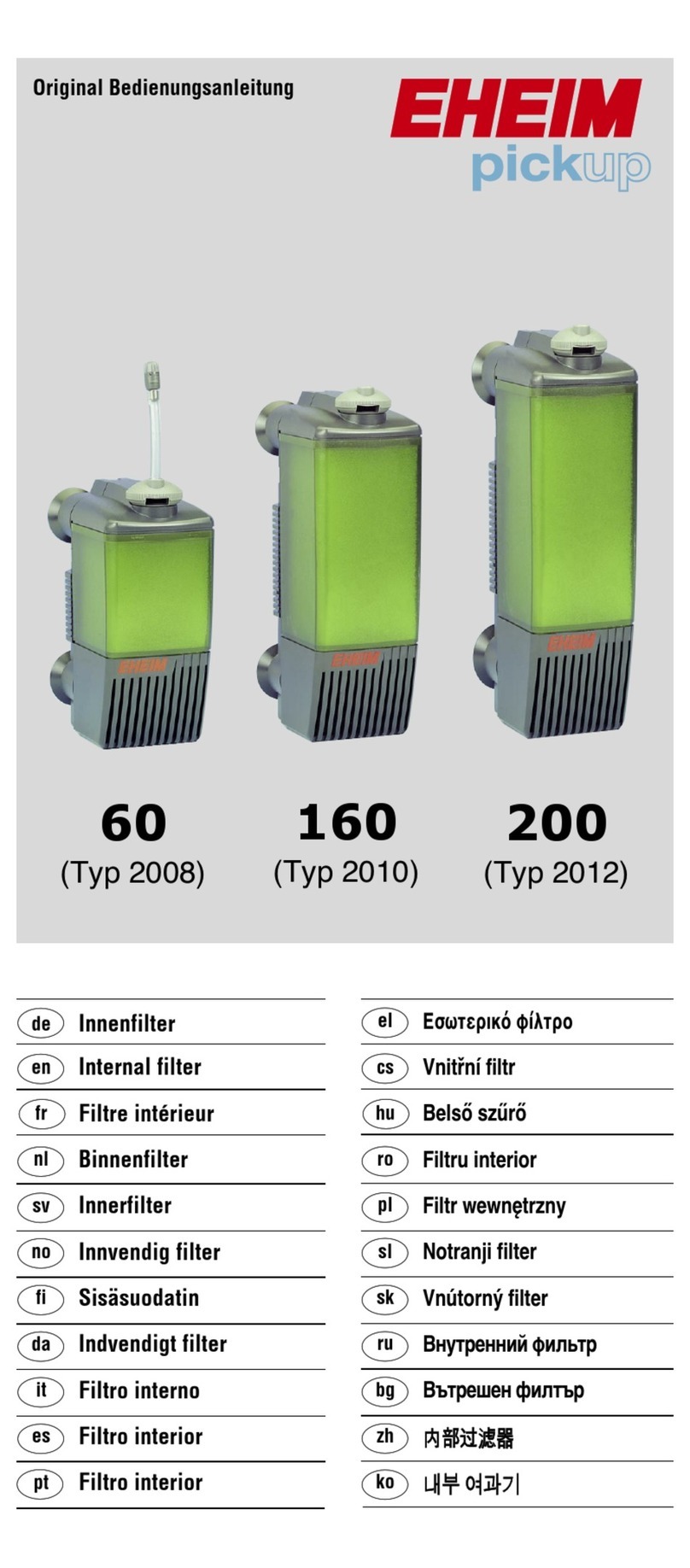20
The Membranes
The membranes need to be cleaned only when feed pressure begins to rise due to fouling or the prod-
uct quality degrades. The primary causes of fouling are biological growth and scaling. Biological growth
occurs when the system is le unused without ushing or pickling. Fouling from mineral scaling will
form when the feed water is “hard” or high in carbonates. Very small “colloidal metal” and metal oxide
parcles can also plug the pores in the membrane. Monitor the product salinity and feed pressure for
higher than normal readings for the exisng condions. Other condions can cause high pressure such
as cold feed water or clogged lters. Low product ow is usually due to low voltage, damaged or worn
feed pump or Clark Pump. Look for all other causes before cleaning the membrane. Membrane life can
be shortened by excessive cleaning.
There are two types of cleaners: acid and alkaline. The acid cleaner (SC-3) will remove mineral scaling.
The alkaline cleaner (SC-2) is used to remove biological by-products, oil, and dirt parcles that get past
the pre-lters. If membrane performance is reduced and it has not been “pickled” recently, cleaning
with both chemicals is recommended. The acid cleaner should be used rst. Colloidal Metals and Met-
al Oxides are very dicult to remove. If the membrane fails to respond to both cleanings, this is an
indicaon of another problem with the system, or that it is me to replace the membrane. Contact
Spectra Watermakers before removing a membrane.
Membrane Cleaning
For normal cleaning, the SC-3 Acid Cleaning Compound is used rst, then the SC-2 Alkaline Cleaning
Compound. If known bio-fouling is present, the SC-2 may be used rst. Using hot water if possible, up
to 100° (38C) is recommended, as it greatly enhances the ability of the cleaners to do their jobs. Do
not exceed 113F (45C) or the membrane may be damaged.
If the history of the system is unknown or it has been le “un-pickled” for an extended length of me
and biological growth is present, it is recommended that the system is cleaned with SC-2, using an al-
ternate source of unchlorinated fresh water before the system is run under pressure. A simple test can
be performed to see if biological growth has occurred. Before running the system, remove the pre-
lter and examine its condion. If the housing is full of smelly discolored water, the system was not
properly stored. Install a clean pre-lter if it was bad. Next check the membrane. Aach the feed and
brine service hoses and lead them to a bucket of clean de-chlorinated water. Open the pressure relief
valve one turn, and manually run the system for 30 seconds. Examine the brine water: if it’s discolored
and smells bad, perform an SC-2 cleaning with an alternate source of unchlorinated water before run-
ning the system pressurized. If the brine is fairly clean, the system can be purged, run normally, and
checked for performance. Clean the membranes only if performance is reduced.
Heang the water is preferable. One way to do this is to nd a camp stove and use a large stainless
steel pot to heat the soluon in. The cleaning soluon throughout the system will heat as it circulates
in and out of the pot. An alternave is to heat the one or two gallons of inial water to 100°F (38C) on
a stove before mixing in the cleaner and circulang it into the system. Periodically stop and reheat the
soluon.
Maintenance Connued…






















